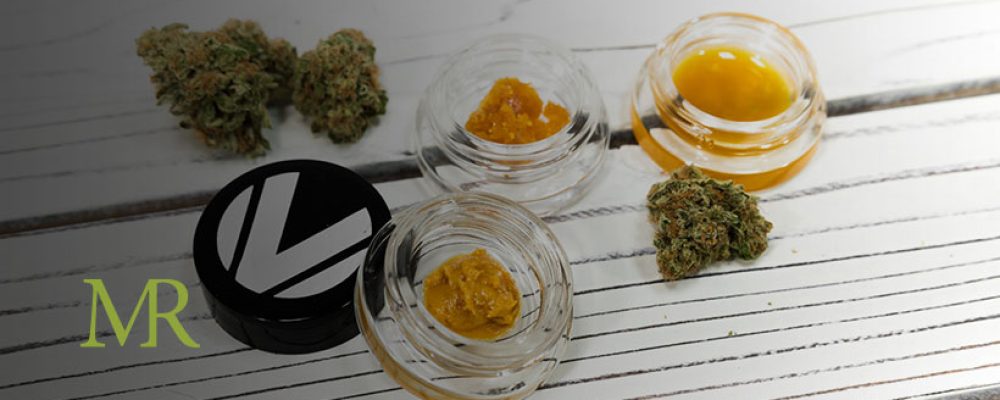Moon rocks. Oil. Rosin. Live resin. Shatter. Sugar. Terp sauce. Wax. Kief. Budder. Distillate. Crumble. These are just a sampling of the products that make up the concentrate market.
The vaping health scare of 2019 has been a boom for concentrate sales. Sales of concentrates, which deliver a strong THC dose compared to other products, are going up, up, up. Sales of concentrates jumped 40% from 2019 to 2020. Wholesale prices of concentrates in most states are going up, too, due to increased consumer demand.
Concentrates — like wax, hash, and shatter — are products that have been mechanically (or chemically) derived from cannabis. This increases the cannabinoid potency (when compared to whole plant material, like flower). Concentrates are typically consumed via smoking or vaping. Customers are still regaining trust in vape products, but the demand for dabs is strong. The result? Concentrate sales account for a larger piece of the overall market share.
Dab tech
Consumer trends show that folks have turned from vape products due to the EVALI lung injuries in August and September 2019. The resulting respiratory health issues associated with vaping turned many consumers to dabbing, which is becoming more comfortable to use as new products are introduced. An added plus? New technology makes the process less intimidating.
A quick search of dab technology uncovers a whole segment of fun new delivery gadgets. If the old dabbing process was too tedious for your liking, there’s now an electronic dab rig, which is an all-in-one device designed to get you lifted, easy-peasy. The newest e-dab rigs are portable, have precisely controlled temperatures, and removes the need for the butane torch or e-nail. Bye, butane!
Sales
Let’s talk about how those numbers add up. According to Headset, the Seattle-based data analytics firm, sales of weed concentrates jumped 40.5% in 2020 in California, Colorado, Nevada, Oregon, and Washington. Adult-use recreational sales were tallied for all states except Oregon; Oregon’s sales included medical, too. The data range compared January-to-November sales in 2020 to the same range in 2019.
Here are some interesting stats:
- Concentrate sales jumped from $567 million in 2019 to $797 million in 2020.
- The average wholesale item price increased from $18.35 to $19.68, an increase of 7.3%.
- More customers are buying 1-gram package sizes; 90% of all units sold in December 2019 were 1-gram packages. In December 2020, 96% of all units sold were 1-gram packages.
Wholesale
We know the average wholesale price of concentrates (for 1-gram packages) in California, Colorado, Nevada, Oregon, and Washington jumped overall by 40.5% between 2019 and 2020. Still, two states in that group had a price decrease during the same period. Nevada’s wholesale price for 1-gram packages dropped by 8.8%, and Oregon’s 1-gram wholesale package price dropped 0.6%.
The wholesale price of concentrates in Michigan (again, for 1-gram packages) is a whopping $31.84. Let’s compare that to the average wholesale price of concentrates in the other states we’ve been looking at:
- Arizona, $19.77
- California, $17.15
- Nevada, $16.32
- Colorado, $15.31
- Oregon, $11.62
Tolerance
As the marijuana industry matures, the consumer’s preferred method of consumption matures, too. Those who smoke every day begin to build up a tolerance to the THC levels, and the effects may start to feel minimal. The concentrated group of products is usually the next step for the heavy consumer.
When markets open up — like in Arizona, for example, flower is the product customers clamor for. As consumers become seasoned pros, they generally start expanding their horizons, testing different products and delivery methods. Concentrates are typically a small percentage of initial sales that tend to increase the longer a market exists.
The THC content in flower is between 20-35%. Concentrates are way more potent; THC content can top 95% in some products. Concentrate customers are discerning consumers; they want the perfect combination of taste, potency, and desired body and mind effects. Cannabis companies work hard to give customers the type of products they want. With more technological advances in delivery mechanisms, sales of extractions and concentrates will continue to increase.
Fast forward
The vape scare of 2019 resulted in consumers taking a closer look at the products they put in their bodies. Some turned to use live rosin and resin, containing some of the whole-plant properties, a range of terpenes, and cannabinoids. They are free of both additives and solvents.
The future for concentrates looks bright. The fear of vaping will fade, but the lasting effect of that scare means that customers will continue to demand pure cannabis products free of additives or cutting agents, cleaner cannabis oils will be the norm. Other innovative products — like developing portable technology — will follow.


